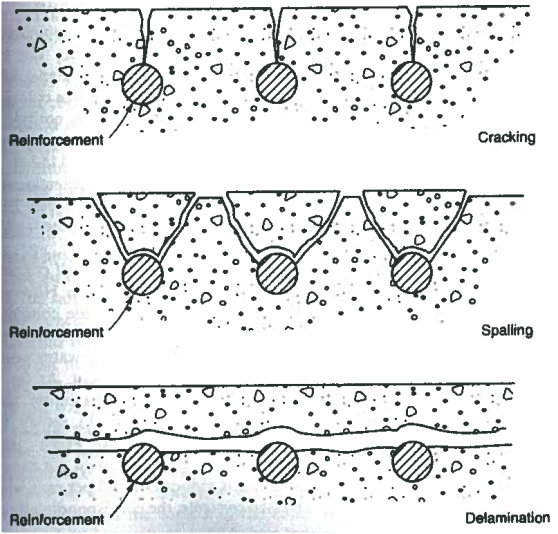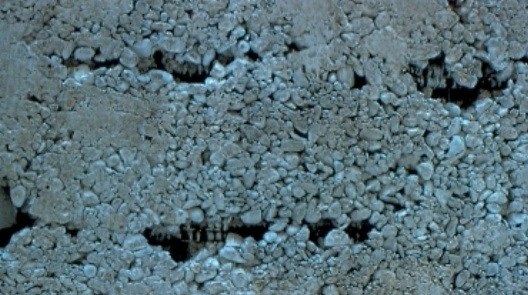In this article, two of the visual defects that might appear on concrete are discussed: Cracking and Honeycombing of concrete.
Cracking of Concrete
Cracking is frequently occur in concrete structures. There are various types of cracking that may occur. Cracks are caused by numerous diverse reasons and can be detected by a Visual Analysis. It should be noted that all concrete structures go through the process of expansion and contraction as a result of the fluctuation in surrounding temperature (from day to night). The expansion of the concrete applies a tensile force on the concrete; once the force is beyond the cracking tension of the concrete, the concrete will crack.
Another cause of cracking is the flexure of the concrete members in different directions due to applied dead and live loads. Basically, if the Design Engineer does not account for these movements in the design of the concrete members (i.e. designing with control joints (telling the concrete where to crack)), cracking will be inevitable.
There are different types of cracks, and they can be categorized by their varying depths: on the surface, shallow depth, deep crack and a through crack.
To determine the width of a crack there are three categories: a fine crack (less than 1 mm), a medium crack (1 to 2 mm) and a wide crack (greater than 2 mm).
Surface cracks detected in the visual survey are usually categorized into two ways, ‘Hairline’ cracks and ‘Structural’ cracks. Hairline cracks are as the name depicts, fine as a piece of hair. Hairline fractures are only a few millimetres in width and depth and do not require immediate repair for there are no consequences to this natural flaw. The difficulty starts when hairline cracks turn into structural cracks.
Structural cracks are normally wider than 6 mm, and if they are not tended to in the very near future, they may affect the structural load capabilities of the concrete. During a Visual Condition Survey, if a thin, non–linear separation of the concrete is detected, it is a surface crack. Some cracks lead to delamination or even eventually lead to spall (See Figure below).

Honeycombing of Concrete
Honeycombing occurs when there is an improper concrete mix which is usually a short–term deterioration. It occurs when the concrete is poured and not properly consolidated. In order to fix honeycombing you need to remove and replace the concrete. A visual condition survey will identify areas of honeycombing by observation. An example of honeycombing can be seen below.

Other Visual Defects:
